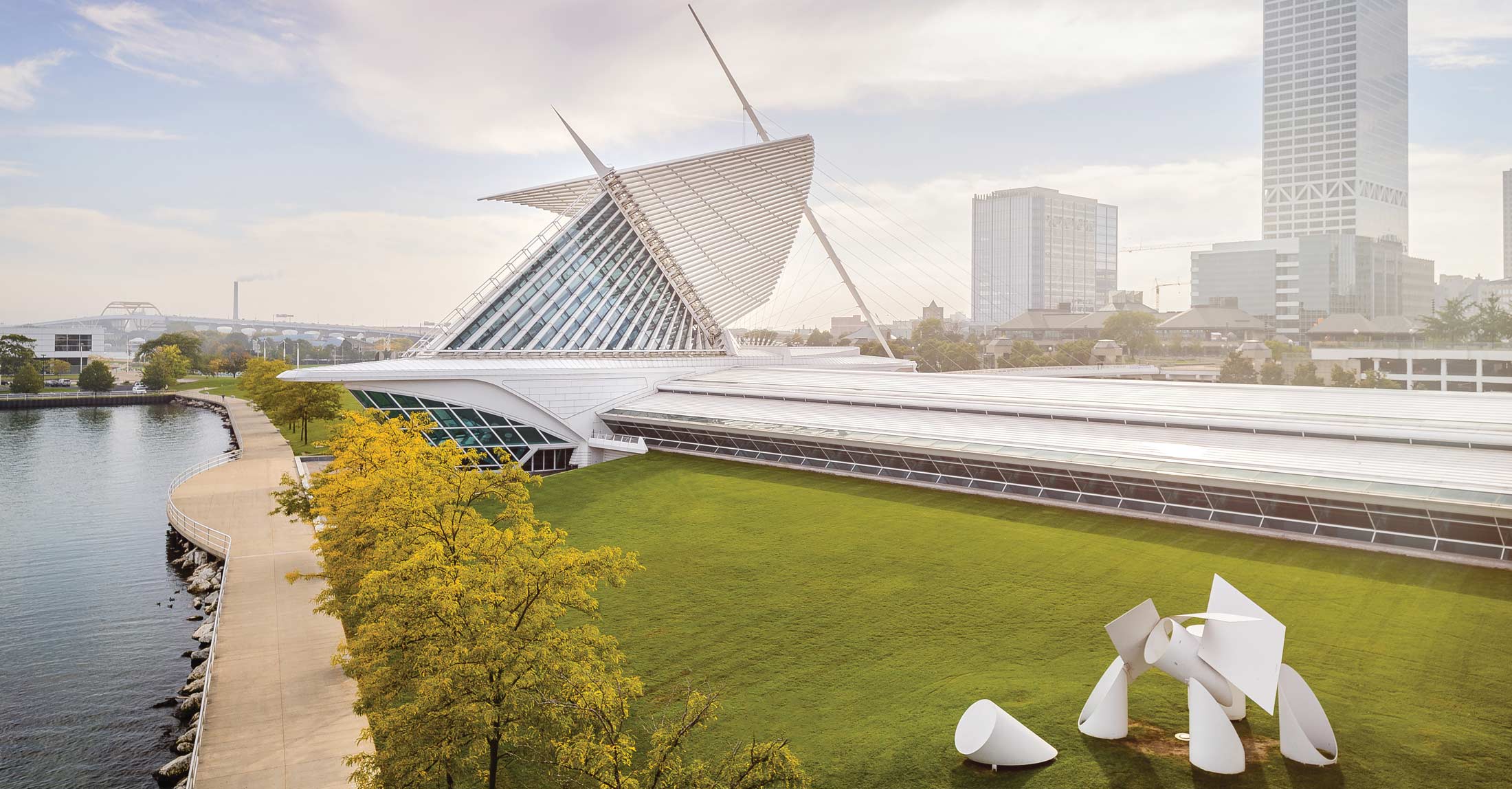
The Eight Themes of Foto
Foto: Modernity in Central Europe, 1918-1945 is divided into eight thematic sections, each of which brings together work from across central Europe to compare local differences against a heritage of shared institutions and attitudes towards modernity.
The Cut-and-Paste World: Recovering from War
Photomontage was pioneered as a technique for radical art in central Europe in early 1919, and it flourished there through the end of World War II. The artists of German Dada, such as John Heartfield, Max Ernst, and Hannah Höch, responded through photomontage to the mechanization and fragmentation of bodies during World War I, as seen in Moholy-Nagy’s Militarism (1924). In areas where WWI broke apart vast empires and brought hope to the constituent populations of now defunct empires, particularly in Poland and Czechoslovakia, photomontage reflected a widespread optimism, seen in Evžen Markalous’s The Apotheosis of Sport (Apotéóza Sportu) (ca. 1927).
Laboratories and Classrooms
One highly influential legacy of modernist photography in central Europe is darkroom experimentation, for instance the play of abstract darkness and cast shadows in Jaromír Funke’s series Abstract Photo (1927-29). For theorists and practitioners such as László Moholy-Nagy, Franz Roh, and Karel Teige, experimental camera work represented truly modern photography. Innovative methods were taught in art schools from Dessau to Lviv, Prague, and Bratislava, and the works were shown in large didactic exhibitions mounted in cities across the region, helping to broaden the acceptance of a modernist vision.
Modern Living
Scenes of urban bustle or new construction, frequently taken from unusual angles or in extreme close-up, typify a modern style of image-making that became popular around 1930-a style embodied by László Moholy-Nagy’s iconic Berlin Radio Tower (1928). The exploding image world popularized modernity in a region filled with anxieties over such sudden and massive changes at every level of life. Out of this “photomania” came many of the great talents represented in the international illustrated press: Life magazine and the Parisian tabloid Vu, for example, are unthinkable without Martin Munkacsi and André Kertész, both of whom got their start in Hungary.
New Women -New Men
The neue Frau or New Woman was a subject of intense public debate that was not only reflected in but also shaped by photography. Pictures of female athletes and dancers, or new press genres for the illustrated press such as the “photo essay” pioneered by studio photographer Yva (Else Neuländer-Simon) gave millions of readers images to idealize or contest in their own self-fashioning. Portraits by Lucia Moholy and Éva Besny give their male subjects a distinctly effeminate look, while others by August Sander or Lotte Jacobi capture the “androgyny chic” of certain German cultural circles, as seen in Jacobi’s view of the gender-bending Klaus and Erika Mann (ca. 1928-32).
The Spread of Surrealism
Surrealism has long been thought of mainly as a French phenomenon, yet a tremendous surrealist output, particularly in photography, originated in central Europe. Artists in Czechoslovakia and Poland expanded on surrealism’s concepts, even in provincial towns such as Olomouc or Lviv, home to the groups f5 (Czech, 1933-38) and Artes (Polish, 1929 36), respectively. Central European artists pursued a variety of approaches, from pseudodocumentary views to happenings staged for the camera and fantastic self-portraits or photomontages, as seen in Herbert Bayers’s Lonely Metropolitan (1932).
Activist Documents
Given the pioneering development of photojournalism and the photo-illustrated press, as well as a broad culture of political dissent, it is not surprising that many photographers across central Europe turned to reportage in the later 1920s and ‘30s. Germany is the country best known for political activism in photography, but Austria, Slovakia, and Hungary established strong activist groups, and Prague hosted the greatest international exhibitions of politically engaged or social photography in the world in the 1930s.
Land without a Name
Picturesque landscapes and traditional scenes-such as Rudolf Balogh’s Shepherd with His Dogs (ca. 1930)-captivated imaginations as much or more than metropolitan views in this still overwhelmingly rural and ethnically varied part of Europe. Homeland Photography became an official named movement throughout the region, with steady support from the press, the government, and the amateur photography network. At the same time, questions over land, its identity and its ownership (its “name”) took on a heavy symbolic charge in the 1930s, as the Third Reich made land-grabbing the principal goal of its foreign policy.
The Cut-and-Paste World: War Returns
Just as World War I shifted central European modernism onto a new plane, World War II brought that modernism to a perverse and tragic conclusion. During WWII, some artists continued to use photomontage in private. Among them were Karel Teige, leader of the Czech avant-garde, who made hundreds of works intended only for himself and his closest friends, and his compatriot Jindrich Heisler, who created his photomontages while hiding for more than three years to escape deportation. For these artists and others, the political ramifications of surrealism gained primary importance, as did the potential of photomontage to comment on both the history of photography and on the state of modernity-a modernity that, in central Europe, had reached its fully realized potential in these depictions from its twilight years.
# # #
